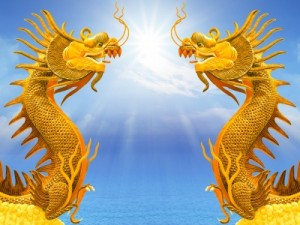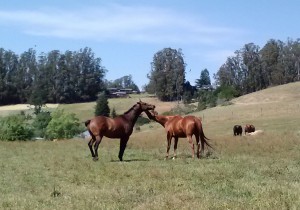 This is the continuation of my previous post – which you can read here.
This is the continuation of my previous post – which you can read here.
As I began to embrace shifting the focus of my coaching and consulting away from traditional Organization Development, Change Management and Executive Coaching and toward Grief work, an idea began taking hold in my head and my heart. It both mystified me made perfect sense. And it scared the hell out of me.
It scared me so much that, like Jonah, I ran away and found myself in the belly of a whale. Hiding. Waiting.
What was that idea? This:
Grief and Joy are the same.
Wha…?
I Know It to Be True
It makes no sense… and it makes perfect sense. It confuses me when I try to wrap my head around it, and it resonates through my body and out to the tips of my fingers.
My body knows it to be true. The same body that has experienced wracking sobs that felt like they would tear me apart, drain me dry, leave me desolate. The same body that has felt surges of energy when I have truly connected with others, and not just in sexual activity. My body knows it to be true. When I hold this idea for a moment, my body knows it to be deep and real like taking a deep breath. It fills me and feeds me like oxygen.
I don’t understand it, but I know it to be true.
Grief and Joy are the same.
A little bell in my soul goes ding. It resonates.
The Belly of the Whale
My brain, on the other hand, does NOT know it to be true. My brain is flummoxed. It resists the idea. How can two such different experiences be the same?
And how could I do this work with such a crazy idea as a foundation?
That is what scared me, scared me into silence and into running away until I found myself in the belly of the whale.
Grief and Joy are the same.
If someone had said this to me when I was in the deepest desert of Grief, in the bleakness and desolation… If someone had said this to me when I was there, I might have wanted to slap them. The way I wanted to slap well-meaning friends who said things like, “You’ll be ready to let him go someday.” I wanted to slap them… and they were right.
And yet…
If someone had told me that Grief and Joy are the same when I was fresh in desolation, maybe I wouldn’t have wanted to slap them. Maybe, at a time when I was in touch with the physical pain of loss, I would have recognized the truth of it with my body.
Even though the physical experiences of Grief and Joy are so different.
And yet…
As I write that I am also struck by how similar they can be.
How similar the paroxysms of grief, the waves of wracking sobs, the grief spasms, are to the waves of orgasm.
Grief – the emotion of separation – and Joy – the emotion of connection… they are the same thing.
Or they are part of the same thing.
My brain says No, and picks out the millions of differences and distinctions. My body says Yes, and breathes into it.
I breathe through it.
Perhaps it is like that. Joy and Connection are the breathing-in. Grief and Disconnection are the breathing-out.
They are both breathing.
They are One.
Someone – I don’t remember who – once said, “Grief is how we love those we have lost.” So Grief is the emotion of connection, too.
Joy is the emotion of connection. And Grief is the emotion of connection. And if A=B and B=C, A=C. They are one, and they are different.
They are One.
And so I have come to the point of acknowledging the fear that this knowledge brings up in me, the resistance to the idea, and to embracing this knowledge, trusting the truth of it. And sharing it with you. Thanks to the help of friends, and to the fact that I can’t un-know it. I must share it. I was not meant for the belly of the whale. At least, not forever.
In the novel “Ordinary People,” Judith Guest wrote, “People who keep stiff upper lips find that it’s damn hard to smile.” We must embrace Grief and Joy. We cannot have one without the other. We can not live without them both.
They are One.
There is more to be said on this subject, and I hope you will tell me what you think.
Meanwhile, here is my promise to you:
I hold this thought for you when you are in the desert and I walk with you. When you dance in delight I will dance with you.
They are One.
Come with me. I will walk with you. Let us prepare… and experience it… together.
You are not alone.
Welcome to the rebirth of Susan T. Blake Consulting and Coaching!
Please contact me to talk about
dealing with – and preparing for – Grief. And Joy.In the coming days, weeks and months I will be writing more about Grief, and Joy, and how they touch our lives in expected and unexpected ways.
And I will continue to write about birds, and horses, and Curiosity.
It is all Connected.Please leave a comment, and share this if you are so moved.
Image courtesy of khunaspix / FreeDigitalPhotos.net







 Twitter
Twitter LinkedIn
LinkedIn Facebook
Facebook